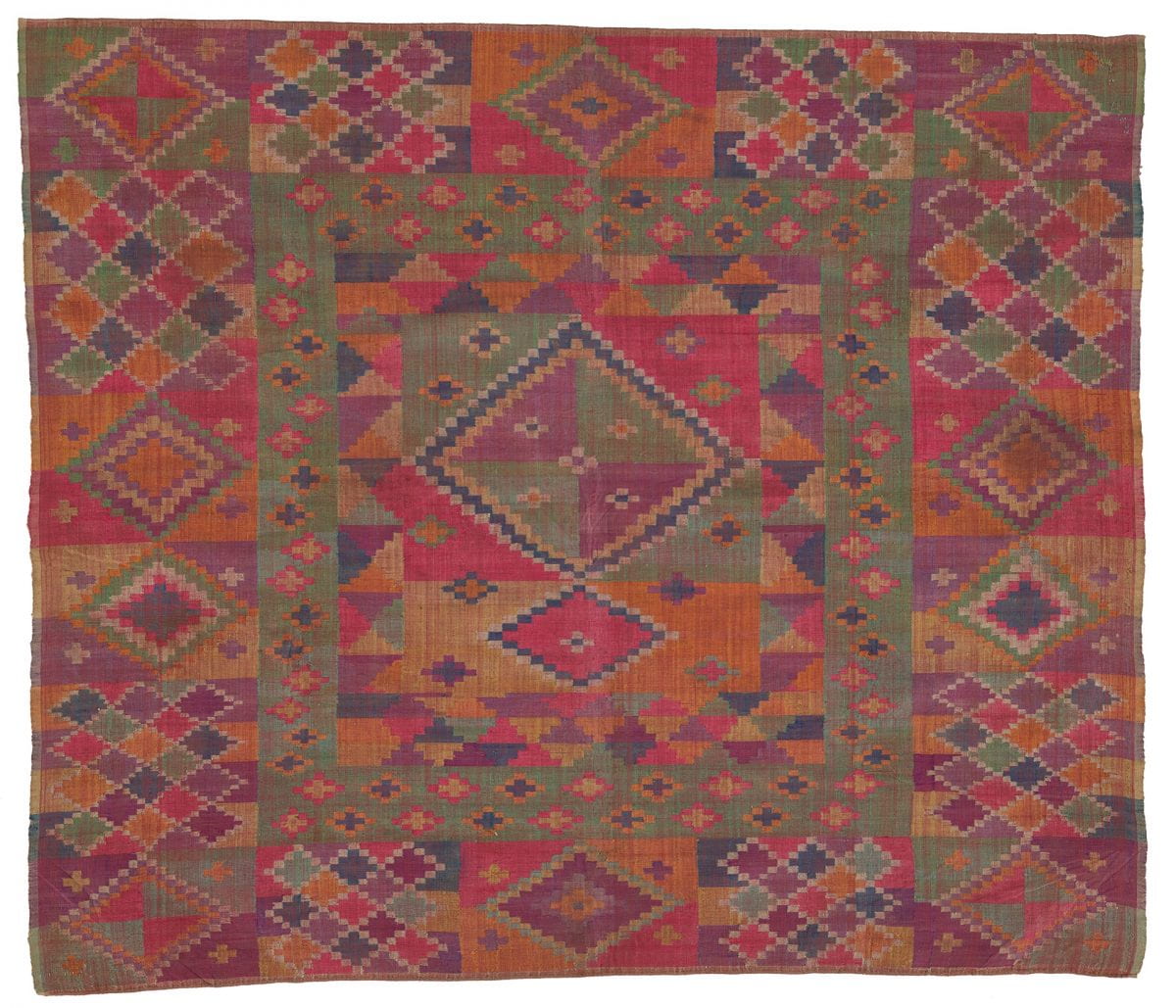The volcanic island of Jolo in the southwest Philippines is the native homeland of the Tausug people, a Muslim group with its own distinct language and culture. Their traditions — and traditional clothing — have endured through centuries of Spanish and American colonization.
The “pis siyabit” is a luxurious silk cloth worn by Tausug men to complete their traditional ensemble: a pair of loose trousers (sawal) with a polo shirt tucked in or out. They typically fold the pis into a triangle, fold the triangle until it is about four inches wide, and then wind it around their head. The pis offers protection, as well as a practical way to carry money (in a knot in one of its corners) or other small items (by transforming the pis into a bag).
This visually arresting example from The Textile Museum Collection is tapestry-woven with a design of diamonds, triangles and squares within squares. While the island of Jolo may seem small and isolated, the design, technique and material of this textile are testament to its role as a cross-cultural hub flowing with goods, technology, people and information.
